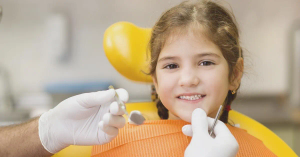Tele-dentistry is rapidly changing the landscape of dental care. As technology weaves into every aspect of healthcare, dentistry has embraced virtual platforms, allowing for consultations, diagnosis, and even preventive care from the comfort of home. This digital approach, fueled by necessity during the COVID-19 pandemic, is now seen as a long-term solution to many traditional barriers in dental care—offering enhanced accessibility, convenience, and efficiency for both patients and dental professionals.
Why Tele-Dentistry Is Taking Off
1. Increased Accessibility: For patients in rural or underserved areas, tele-dentistry has been a game-changer. Virtual consultations eliminate the need for long-distance travel, providing expert advice even in remote regions.
2. Convenience: Busy schedules and long waiting times are no longer deterrents to receiving dental care. With tele-dentistry, patients can schedule consultations at times that suit them, reducing missed appointments.
3. Enhanced Preventive Care: Tele-dentistry allows early detection of issues. Through virtual consultations, dental professionals can advise patients on preventive measures, lifestyle adjustments, or the need for further in-person visits.
4. Cost-Effective: Virtual consultations often cost less than traditional visits, making it a more affordable option for patients seeking routine check-ups or second opinions without the expense of a full dental visit.
5. Pandemic Proofing: The global pandemic highlighted the need for continuity in healthcare. Tele-dentistry emerged as a safe and effective way to maintain oral health without exposing patients to unnecessary risks.
Conclusion
Tele-dentistry represents the future of accessible, convenient, and cost-effective dental care. While it cannot completely replace in-office procedures, it has proven its value in maintaining oral health, addressing concerns early, and offering expert advice without the physical barriers of traditional visits. As technology continues to advance, tele-dentistry will only grow, ensuring that dental care remains at the forefront of healthcare innovation. By embracing this digital shift, patients and professionals alike are shaping a more connected and efficient future for oral health.








